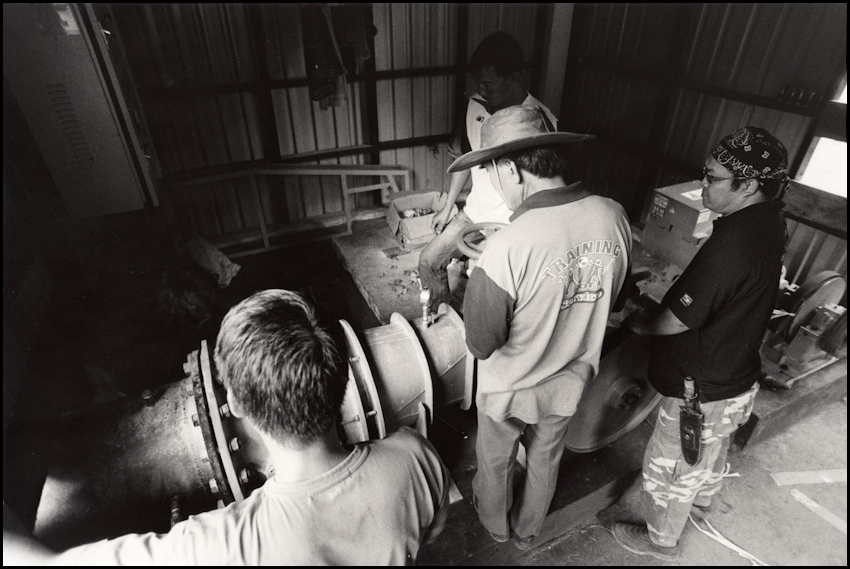In 1997 the Ministry of Rural and Land Development Sarawak commissioned an ambitious hydroelectric project to be designed and installed with a projected maximum output of 100kW - enough to provide a usable level of electricity for most residents of Bario.
Two years and RM13 million later, the project was finally complete and ready for operation. The Kelabit people, some of whom had even purchased new televisions and washing machines in anticipation of putting them to use, couldn't have been happier to see the day arrive. After water flow had been redirected and turbines spooled, Bario's natural and renewable energy started flowing to their homes through state funded overland lines - freeing the Kelabit community from it's dependence on expensive and inconsistently supplied diesel, petrol, and kerosene fuels as their main source of energy.
45 minutes later the entire system had failed.
Unbeknownst to the government officials and local people, the consultants hired to oversee the design and capacity planning hadn't factored in the sheer volume of water needed to keep the system going for anything other than initial operations. A few Kelabits told me that apparently the privately-owned consulting firm knew the planned design would never work but, having been allocated the funding already, continued construction anyways, knowing they would make money either way. Even to the uneducated eye it was easy to see the utilized reservoir was of limited capacity and unlikely to meet energy needs for all of Bario. Millions of dollars had been wasted leaving the community with only difficult questions and no suitable answers. The government, in attempts to resolve the blatant issue, brought in additional consultants who attempted to revive and retrofit the failed system. By 2003 the project had still not become a working reality and additionally suffered heavy flood damage that same year - leaving most people with no hope of ever seeing it working again.
Fast-forward almost 10 years later. A newly redesigned turbine and backing equipment funded by grants from PACOS (Sabah), Seacology (US), and locals of the Bario Asal community, is installed and ready to be brought online for testing. Designed and implemented by PT Heksa Prakarsa Teknik out of Bandung, Indonesia, the Bario micro-hydro turbine is now seeing new life - albeit at a more conservative 45kW.
While the reduced power output is now only enough to provide energy specifically to the Bario Asal and Arur Layun communities of Bario it's an amazing step forward from the previously hopeless situation of corroding penstocks, gutted electrical equipment, and government agencies who had long since moved on.
Bario Asal Hydroelectric Project, Kelabit Highlands, Sarawak, Malaysia, 2008
[url=
http://www.flickr.com/photos/kediwah/4299992240/in/set-72157622911969842/]Flickr[/url]








